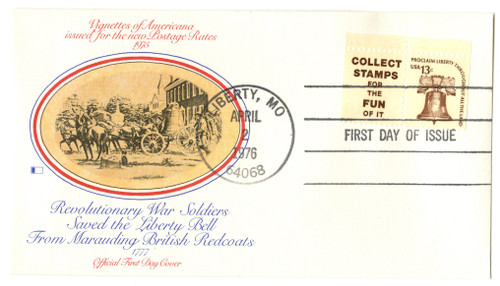
# 1618//18FO - 1975 13c Liberty Bell, misperf and normal
U.S. #1618//18FO
1975 13¢ Liberty Bell
Americana Series Coil Stamps
Issue Date: November 25, 1975
City: Allentown, PA
Printed By: Bureau of Engraving and Printing
Printing Method: Engraved
Perforation: 10 vertically
Color: Brown
Take this opportunity to own a misperfed 1975 Liberty Bell stamp as well as the regular 1618 issue with the correct perforations. A limited number of these stamps were unintentionally produced with perforations in the wrong place, but you can own both versions with one easy order.
The Sesquicentennial Expo
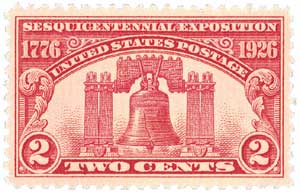
On May 31, 1926, the Sesquicentennial International Exposition opened in Philadelphia, Pennsylvania. It was planned to mark the 150th anniversary of the signing of the Declaration of Independence and the 50th anniversary of the 1876 Centennial Exposition.
John Wanamaker, who had helped plan the Centennial Expo, conceived of the idea for the world’s fair in 1916. At that time, Philadelphia had gained a reputation for political corruption and Wanamaker believed that a world’s fair could help improve how people saw the city.
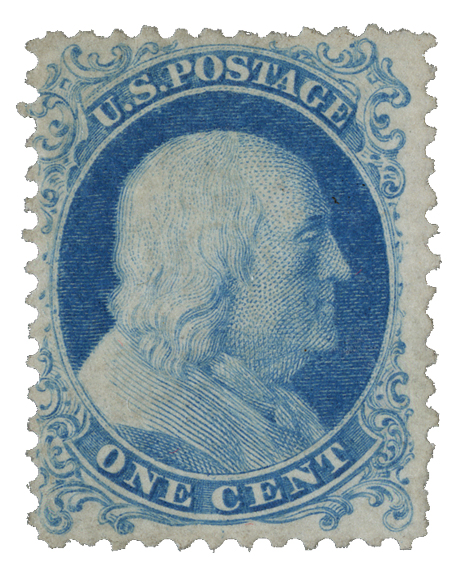
Wanamaker earned some support locally, but then America’s involvement in World War I delayed progress. After the war, planning was further delayed as the city was struck with Spanish Influenza. But Wanamaker continued to push and gain additional support. In 1921, Philadelphia received the official appointment as the host city for the 1926 world’s fair. As planning progressed, the fair’s grand plans had to be scaled back because of budget cuts.
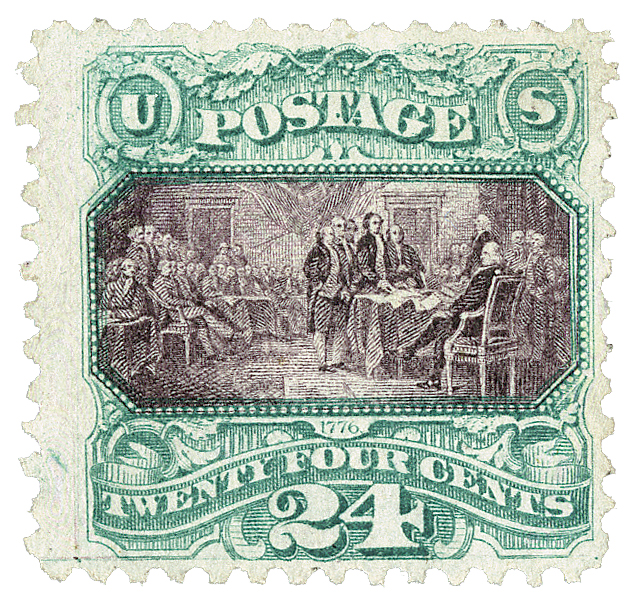
The fair opened to the public on May 31, 1926, though some buildings weren’t completed yet. Among those present for the opening ceremonies were the mayor, Secretary of State Frank B. Kellogg, and Secretary of Commerce Herbert Hoover. Opening day also saw pouring rain, so many guests left and its estimated just 250 people attended that first day.
One of the main attractions at the fair was an 80-foot replica of the Liberty Bell covered with 26,000 light bulbs. The expo also included Sesquicentennial Stadium, which hosted sporting events, religious ceremonies, and the Freedom patriotic pageant. Among the most famous events held there was a boxing match between Gene Tunney and Jack Dempsey that attracted a crowd of 125,000 people.
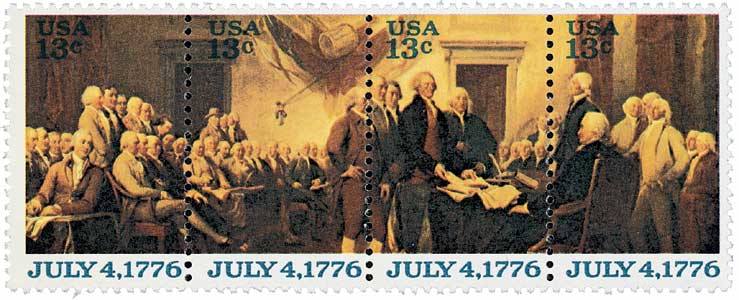
The fair also had the Curtis Organ on display, one of the largest pipe organs in the world. High Street was a popular attraction where people dressed in period clothes to show how the street appeared in colonial times. There was also Treasure Island, an amusement park for children that was described as a “children’s paradise.”
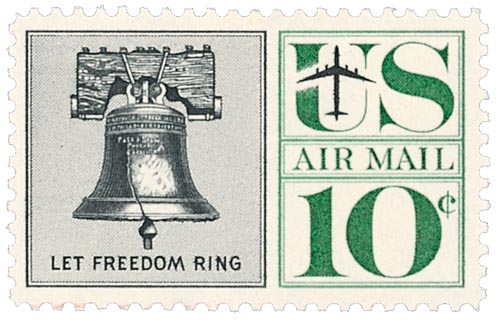
The expo’s events also included the dedication of the Naval Air Facility Mustin Field in September. The event drew 1,500 onlookers including military leaders and representatives from 30 foreign nations.
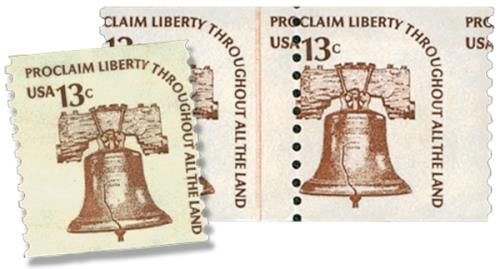
By the time the expo closed in November, it had seen about 10 million visitors, which was less than had been anticipated. Some called the fair a flop because it was unable to pay off all its debts, selling off its assets in 1927. Several factors have been blamed for the fair’s poor performance – arguing among the organizers, poor advertising, and rain – it rained 107 of the 184 days the fair was open. While the fair wasn’t a success, several of the buildings found new uses in the years that followed. Some have also called for a fair to be held in the city in 2026 for the 250th anniversary of the Declaration of Independence.
U.S. #1618//18FO
1975 13¢ Liberty Bell
Americana Series Coil Stamps
Issue Date: November 25, 1975
City: Allentown, PA
Printed By: Bureau of Engraving and Printing
Printing Method: Engraved
Perforation: 10 vertically
Color: Brown
Take this opportunity to own a misperfed 1975 Liberty Bell stamp as well as the regular 1618 issue with the correct perforations. A limited number of these stamps were unintentionally produced with perforations in the wrong place, but you can own both versions with one easy order.
The Sesquicentennial Expo

On May 31, 1926, the Sesquicentennial International Exposition opened in Philadelphia, Pennsylvania. It was planned to mark the 150th anniversary of the signing of the Declaration of Independence and the 50th anniversary of the 1876 Centennial Exposition.
John Wanamaker, who had helped plan the Centennial Expo, conceived of the idea for the world’s fair in 1916. At that time, Philadelphia had gained a reputation for political corruption and Wanamaker believed that a world’s fair could help improve how people saw the city.

Wanamaker earned some support locally, but then America’s involvement in World War I delayed progress. After the war, planning was further delayed as the city was struck with Spanish Influenza. But Wanamaker continued to push and gain additional support. In 1921, Philadelphia received the official appointment as the host city for the 1926 world’s fair. As planning progressed, the fair’s grand plans had to be scaled back because of budget cuts.

The fair opened to the public on May 31, 1926, though some buildings weren’t completed yet. Among those present for the opening ceremonies were the mayor, Secretary of State Frank B. Kellogg, and Secretary of Commerce Herbert Hoover. Opening day also saw pouring rain, so many guests left and its estimated just 250 people attended that first day.
One of the main attractions at the fair was an 80-foot replica of the Liberty Bell covered with 26,000 light bulbs. The expo also included Sesquicentennial Stadium, which hosted sporting events, religious ceremonies, and the Freedom patriotic pageant. Among the most famous events held there was a boxing match between Gene Tunney and Jack Dempsey that attracted a crowd of 125,000 people.

The fair also had the Curtis Organ on display, one of the largest pipe organs in the world. High Street was a popular attraction where people dressed in period clothes to show how the street appeared in colonial times. There was also Treasure Island, an amusement park for children that was described as a “children’s paradise.”

The expo’s events also included the dedication of the Naval Air Facility Mustin Field in September. The event drew 1,500 onlookers including military leaders and representatives from 30 foreign nations.

By the time the expo closed in November, it had seen about 10 million visitors, which was less than had been anticipated. Some called the fair a flop because it was unable to pay off all its debts, selling off its assets in 1927. Several factors have been blamed for the fair’s poor performance – arguing among the organizers, poor advertising, and rain – it rained 107 of the 184 days the fair was open. While the fair wasn’t a success, several of the buildings found new uses in the years that followed. Some have also called for a fair to be held in the city in 2026 for the 250th anniversary of the Declaration of Independence.










